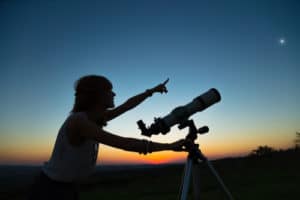When your likeness appears on a doll, it usually means you are famous. Sometimes, though, your image may be used as inspiration, and yet you gain no fame or fortune for it. Such is the case of this unusual lawsuit in Wisconsin.
The American Girl dolls have been popular for decades and enjoy a massive fan following. With a mission to “celebrate girls and all that they can be,” the company is known to “develop products and experiences that help girls grow up in a wholesome way while encouraging them to enjoy girlhood through fun and enchanting play.”
Many parents and doll enthusiasts know about their 18” historical dolls with all of the books, accessories, and historically accurate garments that the company makes available. They also have Girl of the Year dolls, which are contemporary dolls designed to “reflect the various interests, issues, and concerns facing real girls today.”
Little wonder that they chose to create a doll they named “Luciana Vega” who is described as an “aspiring astronaut ready to take the next giant leap to Mars.” With a streak of purple in her red hair and dazzling holographic shoes, she is sure to create a bit of interest in science, space, astronomy, and other related issues.
The problem is Luciana Vega is not as fictional as she should be…perhaps, not at all.
It points out that Ms. Walkowicz is recognized by many in the world of astronomy for sporting a purple streak in her red-hued hair. She is known for her unique fashion choices, including signature shoes, and dressing in a distinct way. The lawsuit points out that the “original” doll has all of the same hallmarks.
The language used in the lawsuit also explains that the “defendants used the name and likeness of Lucianne, a well-known figure in astronomy, space and STEM, who particularly studied the star Vega,” thus making the choice of Luciana Vega a clear reference to the astronomer.
Noted as the Girl of the Year doll, it is intended to stimulate interest in STEM subjects and features a book that focuses on space travel. Reviews from buyers note the popularity of the doll in the classroom setting, but that has not halted Ms. Walkowicz or her attorneys from pressing the matter in the courts.
Suing the company for unspecified compensatory, punitive and other damages, Ms. Walkowicz’s attorney said that any discussions with the doll maker have been “unproductive,” even though there is no defense for the company’s use of her likeness without any sort of authorization or compensation.
This is not the only time someone has found it necessary to go after dollmakers who used their likenesses without authority. Arnold Schwarzenegger has had to pursue a similar case with the makers of some bobblehead dolls. And while it is common for major celebs to see this sort of use of their image, it is bizarre that a noted scientist should face such a challenge.
In an interview in the Chicago Tribune, the astronomer said that this “doll shares far too many resemblances to me to have been fabricated out of whole cloth… I really felt violated by it. It seemed so clearly to be based on me — and not only my appearance and my clothes, but also my work, because there are things about the doll … that are directly related to my career, my life’s work.”
Reaching out to Mattel didn’t generate a response and forced Walcowicz and her legal team to file this suit. To date, the dolls are still available and Walcowicz is still focused more on the stars than the courts.

